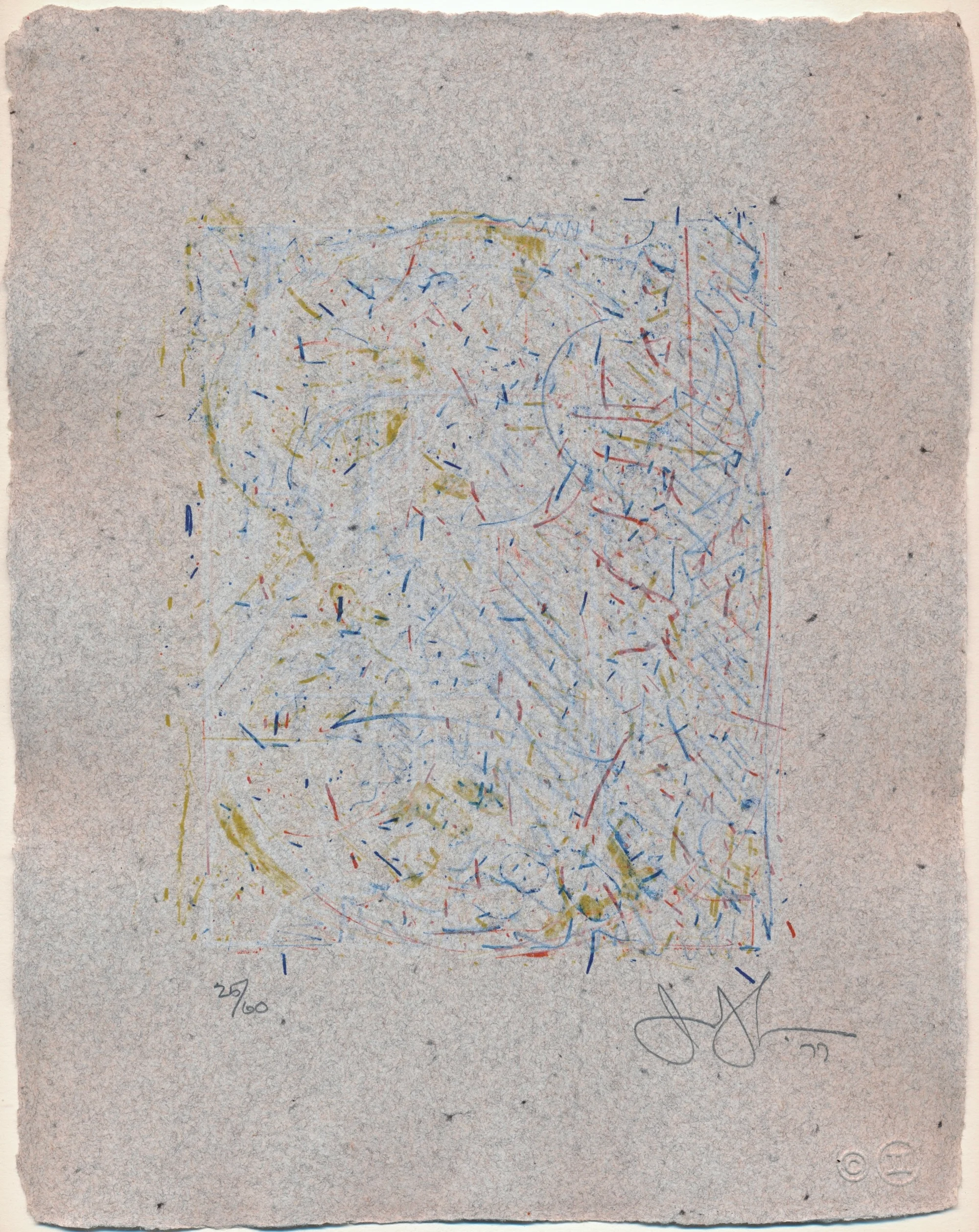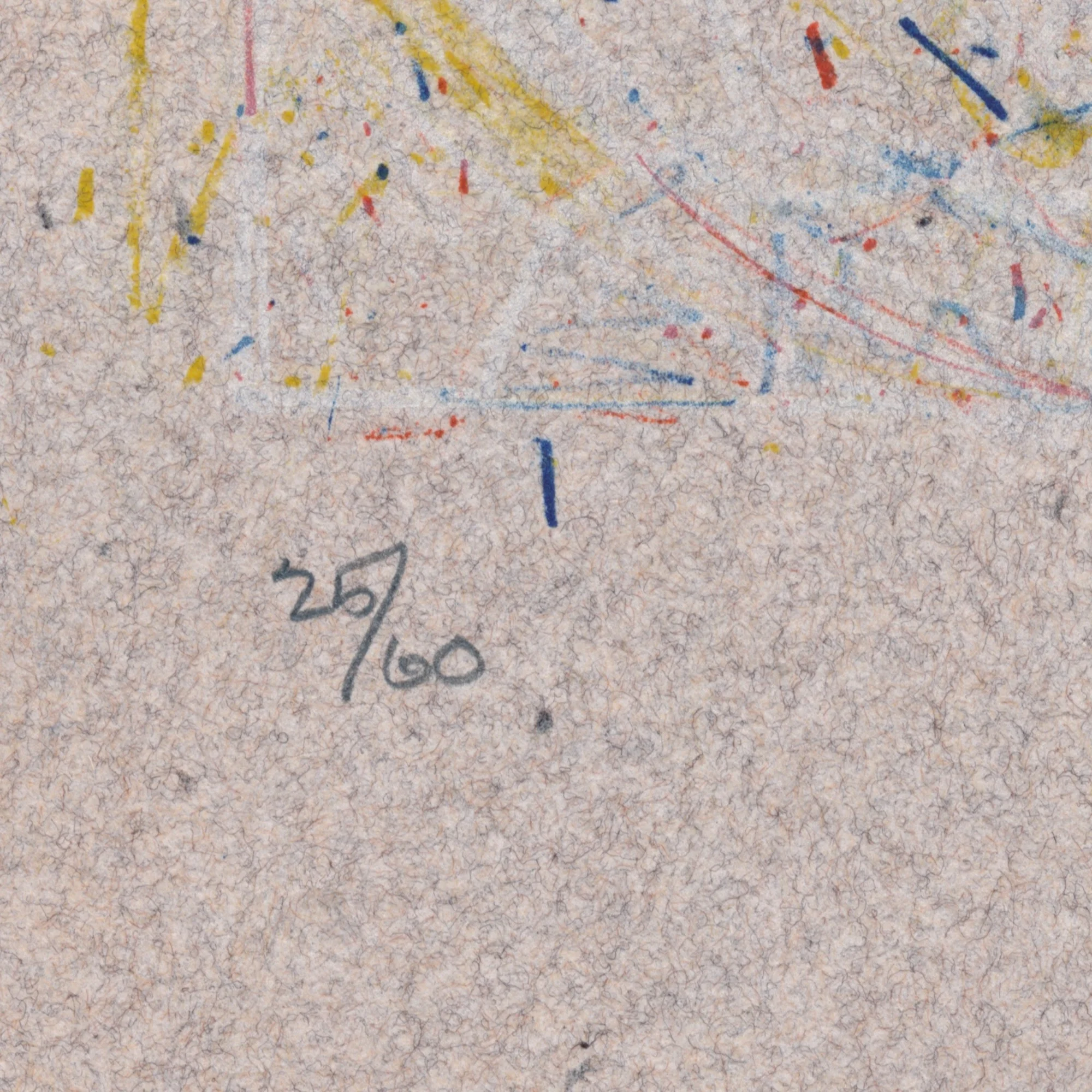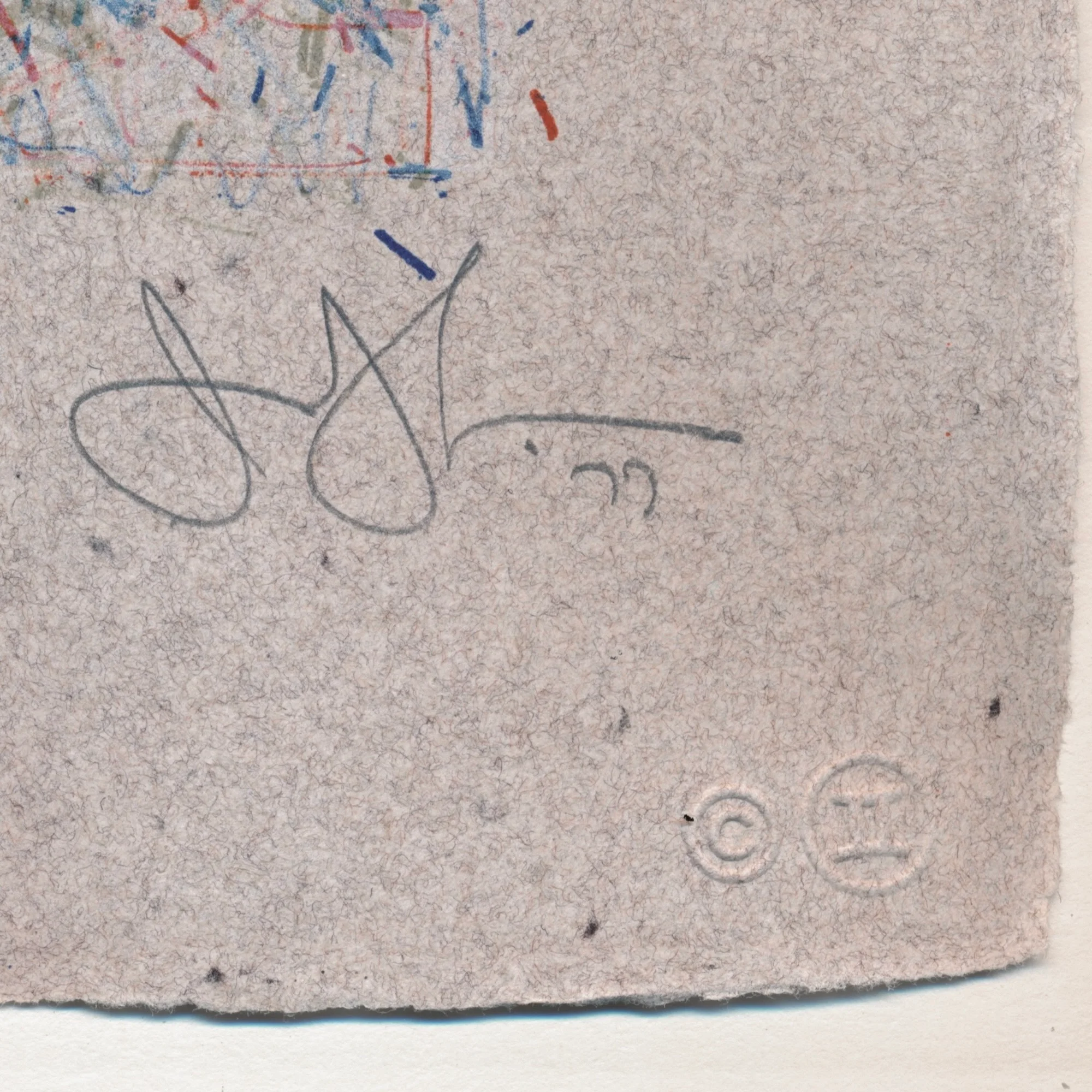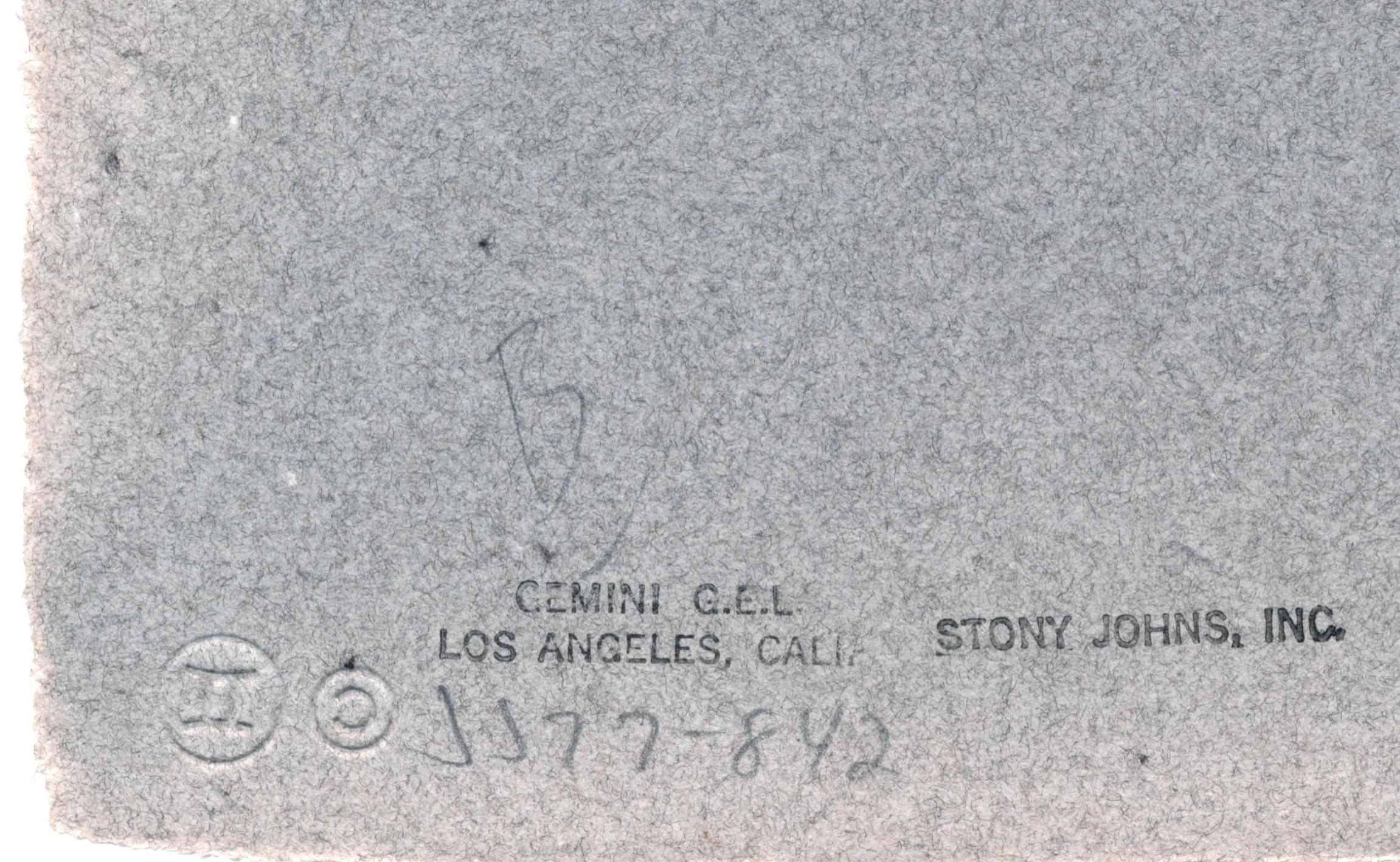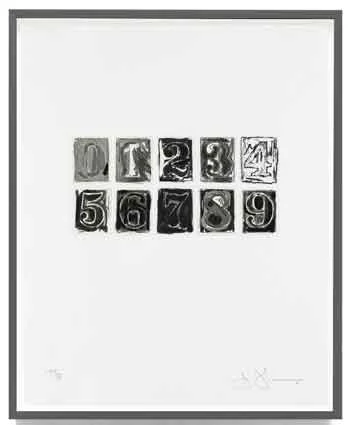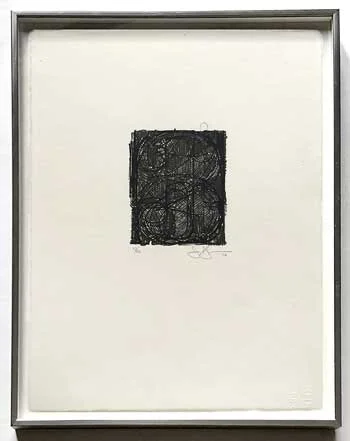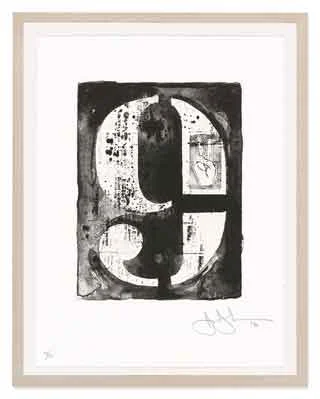Jasper Johns0 through 9
0 through 9
(ULAE 190), 1977
color lithograph from 4 aluminum plates on La Paloma handmade paper
image: 6 x 4 7/8 inches
paper: 9 3/8 x 7 3/4 inches
frame: 18 x 16 inches
edition: 60 with 15 AP's
signed, dated "Jasper Johns '77" and numbered in pencil
published by Gemini G.E.L., Los Angeles with their blindstamp
Gemini G.E.L. inkstamp and workshop number "JJ77-842" on the verso
© 2024 Jasper Johns / Licensed by VAGA at Artists Rights Society (ARS), NY
Literature
Judith Goldman, Jasper Johns Prints 1977-1981, Thomas Segal Gallery, Boston, MA, 1981, Segal 4, n.p., another impression reproduced full page color.
Richard Field, The Prints of Jasper Johns 1960-1993: A Catalogue Raisonne, ULAE, New York, 1994, Catalogue Reference ULAE 190, n.p., another impression reproduced in full page color.
image: 6 x 4 7/8 inches
paper: 9 3/8 x 7 3/4 inches
frame: 18 x 16 inches
edition: 60 with 15 AP's
signed, dated "Jasper Johns '77" and numbered in pencil
published by Gemini G.E.L., Los Angeles with their blindstamp
Gemini G.E.L. inkstamp and workshop number "JJ77-842" on the verso
© 2024 Jasper Johns / Licensed by VAGA at Artists Rights Society (ARS), NY
Literature
Judith Goldman, Jasper Johns Prints 1977-1981, Thomas Segal Gallery, Boston, MA, 1981, Segal 4, n.p., another impression reproduced full page color.
Richard Field, The Prints of Jasper Johns 1960-1993: A Catalogue Raisonne, ULAE, New York, 1994, Catalogue Reference ULAE 190, n.p., another impression reproduced in full page color.
Selected Museum Collections
Walker Art Center, Minneapolis
Dallas Museum of Art, Dallas
National Gallery of Art, Washington D.C.
National Gallery of Art, Australia
The Museum of Fine Arts, Houston


